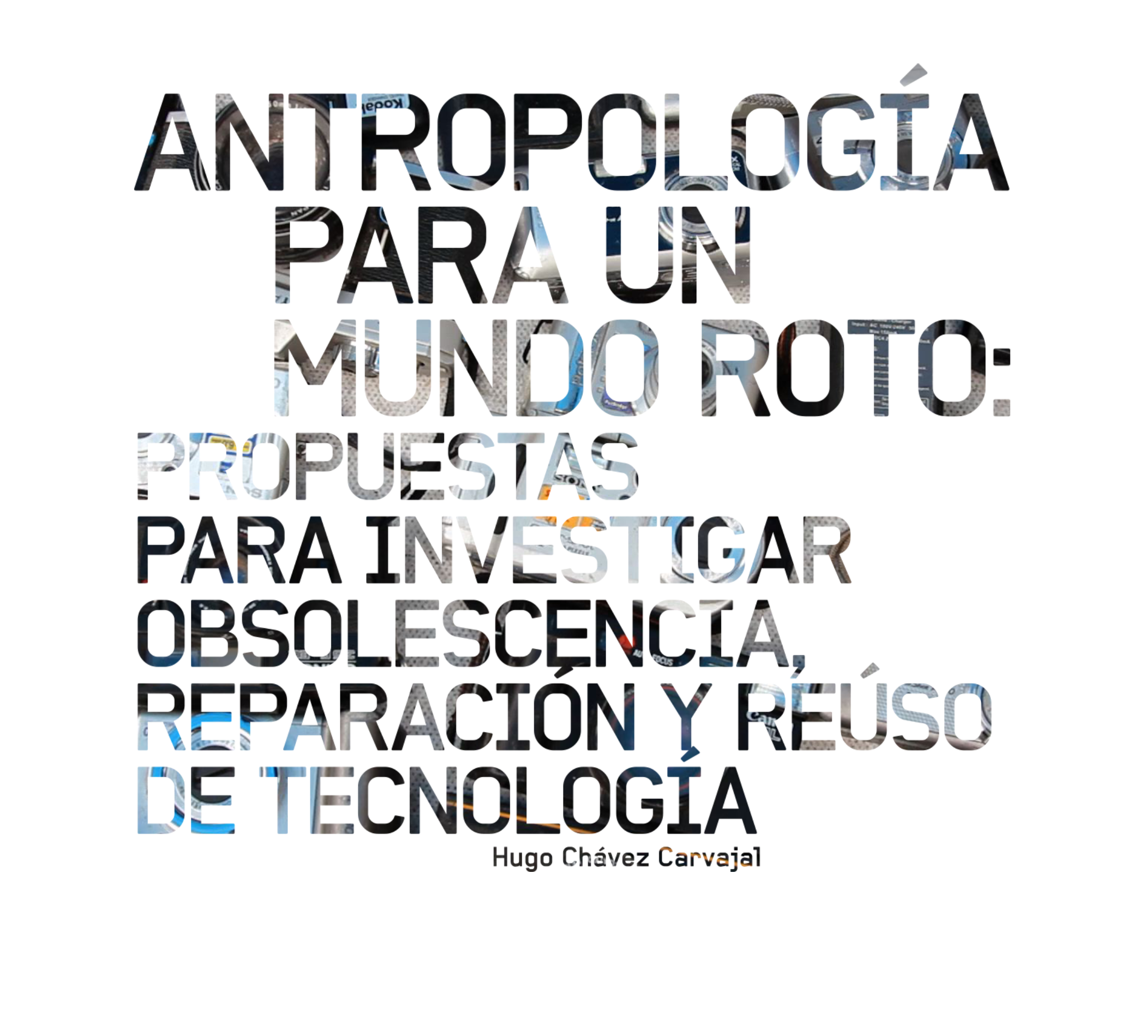Anthropology for a broken world: Proposals for investigating the obsolescence, repair, and reuse of technology

Published 2024-12-02
Keywords
- repair,
- reuse,
- obsolescence,
- theory,
- methodology
- technology ...More
How to Cite
Copyright (c) 2024 Hugo Chavez

This work is licensed under a Creative Commons Attribution-NonCommercial 4.0 International License.
Abstract
Recently, reparations have gained visibility as a theoretical, ethical, and methodological framework in various academic and political discussions. To such an extent that gradually, «reparations studies» are emerging as a new transdisciplinary research approach. Through
the lens of reparations, academics from diverse backgrounds are mapping out a broad range of activities, skills, and subjectivities. This article examines the main theoretical reflections on the topic and some methodological steps to carry out a transmedia project on repair culture, in which a documentary, a doctoral thesis, and a docuweb engage in dialogue.
Downloads
References
- Appadurai, A. (1991). La vida social de las cosas. perspectiva cultural de las mercancías. Editorial Grijalbo.
- Braff, L. y Nelson, K. (2020). Introduction to Anthropology. En Perspectives: An Open Invitation to Cultural Anthropology (3-28), Society for Anthropology in Community Colleges.
- Bueno, C. (2012). Redes globales de innovación. Revista de Antropología Social, 21: 93-116.
- Edgerton, D. (2006). The Shock of the Old: Technology and Global History Since 1900. Profile Books.
- García Canclini, N. (1982). Las culturas populares en el capitalismo. Editorial Nueva Imagen.
- ———. (2000). Cultura popular: de la épica al simulacro . Quaderns portàtils, MACBA. https://img.macba.cat/public/docu- ment/2020-02/qp_06_canclini.pdf
- Graham, S. y Thrift, N. (2007). Out of Order. Understanding Repair and Maintenance. Theory, Culture & Society, vol. 24(3): 1-25. doi: 10.1177/0263276407075954
- Graziano, V. y Trogal, K. (2019, mayo). Repair matters en Ephemera. Theory & politics in organization, 19 (2): 203-227. http://www.ephemerajournal.org/sites/default/files/pdfs/issue/19-2ephemera-jul19.pdf
- Gutiérrez De Angelis, M. (2012). Antropología visual y medios digitales: Nuevas perspectivas y experiencias metodológicas. Revista de Antropología Experimental, núm. 12: 101-112. https://revistaselectronicas.ujaen.es/index.php/rae/article/ view/1851
- Henke, C. (2019). Negotiating Repair: The Infraestructural Contexts of Practice and Power. En Ignaz Strebel, Alain Bovet y Philippe Sormani (eds.), Repair Work Ethnographies: Revisiting Breakdown, Relocating Materiality. Palgrave Macmillan.
- Houston, L. y Jackson, S. (2016). Values in Repair. I Conference on Human Factors in Computing Systems. San Jose, Ca.
- Ingold, T. (2012). Ambientes para la vida. Conversaciones sobre humanidad, conocimiento y antropología. Ediciones Trilce.
- ———. (2008). Bringing Things to Life: Creative Entanglements in a World of Materials, Realities. NCRM Working Paper Series, núm. 15, National Centre for Research Methods. https://hummedia.manchester.ac.uk/schools/soss/morgancentre/ research/wps/15-2010-07-realities-bringing-things-to-life.pdf
- Isenhour, C. y Reno, J. (2019). On Materiality and Meaning: Ethnographic Engagements with Reuse, Repair & Care. Worldwide Waste: Journal of Interdisciplinary Studies, 2 (1): 1-8. DOI: https://doi.org/10.5334/wwwj.27
- Jackson, S. (2014). Rethinking Repair. En Tarleton Gillespie, Pablo J. Boczkowski y Kirsten A. Foot (eds.), Media Technologies: Essays on Communication, Materiality, and Society, MIT Press.
- Latour, B. (2008). Reensamblar lo social. Una introducción a la teoría del actor red. Ediciones Manantial.
- Lemonnier, P. (2012). Technology. En Nicholas Thieberger (ed.), The Oxford Handbook of Linguistic Fieldwork (298-316),
- Oxford University Press.
- Marcus, G. (2001). Etnografía en/del sistema mundo. El surgimiento de la etnografía multilocal. Alteridades, 11 (22): 111-127.
- Martínez, F. (2017). Waste is not the end. For an anthropology of care, maintenance and repair. Social Anthropology / Anthropologie Sociale 25, (3): 346-350. https://doi.org/10.1111/1469-8676.12436
- Mattern, Shannon (2018, noviembre). Maintenance and Care. Places Journal. https://placesjournal.org/article/ maintenance-and-care/
- McLuhan, M. y McLuhan, E. (2009). Las leyes de los medios. Cuadernos de Información y Comunicación, vol. 14: 285-316.
- Nieto Calleja, R. (1998). Lo imaginario como articulador de los órdenes laboral y urbano. Alteridades, 8 (15): 121-129.
- Oropallo, G. (2016). Between Technological Utopia and Broken World Thinking: The Elevation of Repair. En Back to the Sustainable
- Future: Visions of Sustainability in the History of Design. Consejo de Investigación de Noruega y Universidad de Oslo.
- Pink, S. (2006). The Future of Visual Anthropology: engaging the senses. Routledge.
- Russell, A. y Vinsel, L. (2016). Hail the maintainers: Capitalism excels at innovation but is failing at maintenance, and for most lives it is maintenance that matters more, en Aeon Magazine of Ideas and Culture. Aeon Media Group. https:// aeon.co/essays/innovation-is overvalued-maintenance-often-matters-more
- Sennett, R. (2009). El artesano. Anagrama.
- Zirión Pérez, A. (2015, enero-junio). Miradas cómplices: cine etnográfico, estrategias colaborativas y antropología visual aplicada. Iztapalapa Revista de Ciencias Sociales y Humanidades, 36 (78): 45-70. https://revistaiztapalapa.izt.uam. mx/index.php/izt/article/view/115/201
